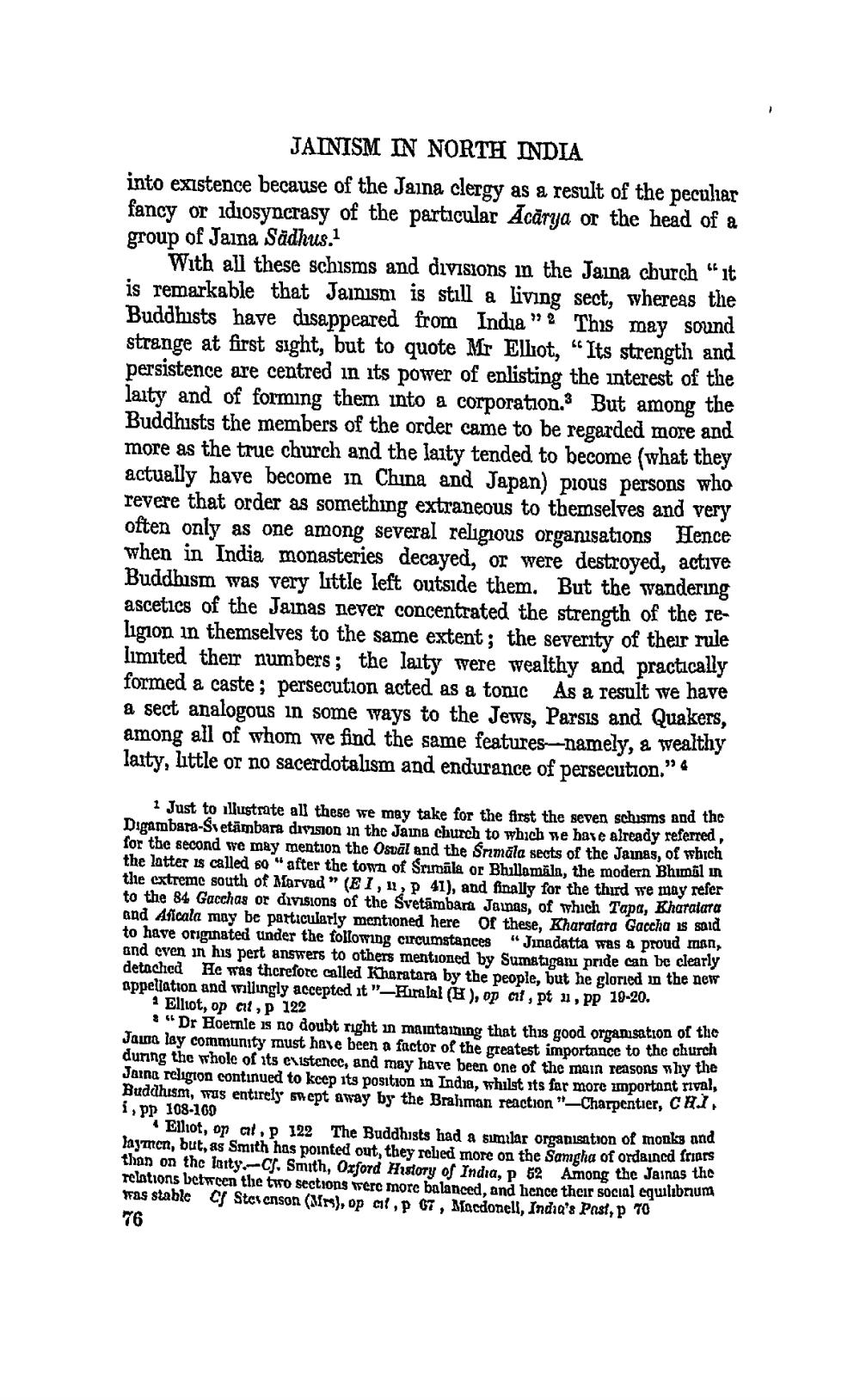________________ JAINISM IN NORTH INDIA into existence because of the Jaina clergy as a result of the peculiar fancy or idiosyncrasy of the particular Acarya or the head of a group of Jaina Sadhus.1 With all these schisms and divisions in the Jaina church it is remarkable that Jainism is still a living sect, whereas the Buddhists have disappeared from India" 2 This may sound strenge at first sight, but to quote Mr Elhot, "Its strength and persistence are centred in its power of enlisting the interest of the laity and of forming them into a corporation. But among the Buddhists the members of the order came to be regarded more and more as the true church and the laty tended to become (what they actually have become in China and Japan) pious persons who revere that order as something extraneous to themselves and very often only as one among several religious organisations Hence when in India monasteries decayed, or were destroyed, active Buddhism was very little left outside them. But the wandering ascetics of the Jainas never concentrated the strength of the religion in themselves to the same extent; the severity of their rule limited their numbers; the laity were wealthy and practically formed a caste; persecution acted as a tonic As a result we have a sect analogous in some ways to the Jews, Parsis and Quakers, among all of whom we find the same features-namely, a wealthy lasty, little or no sacerdotalism and endurance of persecution." 1 Just to illustrate all these we may take for the first the seven schisms and the Digambara-Sietambara division in thc Jams church to which we have already referred , for the second we may mention the Ostal and the Srimala sects of the Jainas, of which the latter is called so after the town of Srimala or Bhillamil, the modern Bhumil in tle extreme south of Marvad" (EI,1, 41), and finally for the third we may refer to the 84 Gacchas or divisions of the Svetambard James, of which Tapa, Kharatara and Aflcala may be particularly mentioned here or these, Kharatara Gacchas said to have originated under the following circumstances "Jinndatta was a proud mon, and even in his pert answers to others mentioned by Sumatagami pride can be clearly detached He was therefore called Kharatara by the people, but he gloried in the new appellation and willingly accepted it "-Hiralal (H), op cit, pt 11, PP 19-20. Elliot, op cit, P 122 "Dr Hoere is no doubt right in maintaining that this good organisation of the Jaud lay community must have been a factor of the greatest importance to the church during the whole of its existence, and may have been one of the main reasons why the Jaina religion continued to kcep its position in India, whilst its far more important rive Buddhism, was entirely swept away by the Brahman reaction"-Charpentier, CHI 1, pp 108-169 Ellot, on at, P 122 The Buddhists had a similar organisation of monks and Taymen, but, as Smith has pointed out, they reled more on the Samcha of ordained AS than on the Inity-C. Smith, Oxford History of India, P 52 Among the Jasnas the relations between the two sections were more balanced, and hence their social equilibrium was stable CJ Stevenson (Mr), op at, p 67 , Macdonell, India's Past, P TO 76




